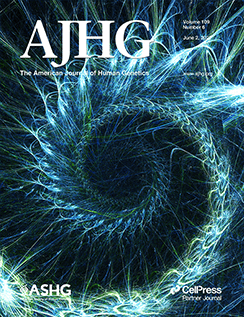Gene and phenome-based analysis of the shared genetic architecture of eye diseases.
IF 8.1
1区 生物学
Q1 GENETICS & HEREDITY
引用次数: 0
Abstract
While many eye disorders are linked through defects in vascularization and optic nerve degeneration, genetic correlation studies have yielded variable results despite shared features. For example, glaucoma and myopia both share optic neuropathy as a feature, but genetic correlation studies demonstrated minimal overlap. By leveraging electronic health record (EHR) resources that contain genetic variables such as genetically predicted gene expression (GPGE), researchers have the potential to improve the identification of shared genetic drivers of disease by incorporating knowledge of shared features to identify disease-causing mechanisms. In this study, we examined shared genetic architecture across eye diseases. Our gene-based approach used transcriptome-wide association methods to identify shared transcriptomic profiles across eye diseases within BioVU, Vanderbilt University Medical Center's (VUMC's) EHR-linked biobank. Our phenome-based approach leveraged phenome-wide association studies (PheWASs) to identify eye disease comorbidities. Using the beta estimates from the significantly associated comorbidities, we constructed a phenotypic risk score (PheRS) representing a weighted sum of an individual's eye disease comorbidities. This PheRS is predictive of eye disease status and associated with the altered GPGE of significant genes in an independent population. The implementation of both gene- and phenome-based approaches can expand genetic associations and shed greater insight into the underlying mechanisms of shared genetic architecture across eye diseases.求助全文
约1分钟内获得全文
求助全文
来源期刊
CiteScore
14.70
自引率
4.10%
发文量
185
审稿时长
1 months
期刊介绍:
The American Journal of Human Genetics (AJHG) is a monthly journal published by Cell Press, chosen by The American Society of Human Genetics (ASHG) as its premier publication starting from January 2008. AJHG represents Cell Press's first society-owned journal, and both ASHG and Cell Press anticipate significant synergies between AJHG content and that of other Cell Press titles.

 求助内容:
求助内容: 应助结果提醒方式:
应助结果提醒方式:


